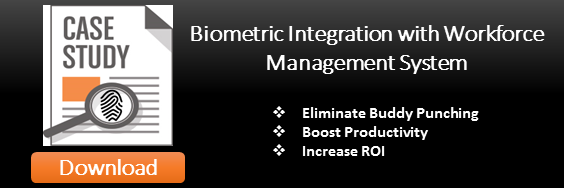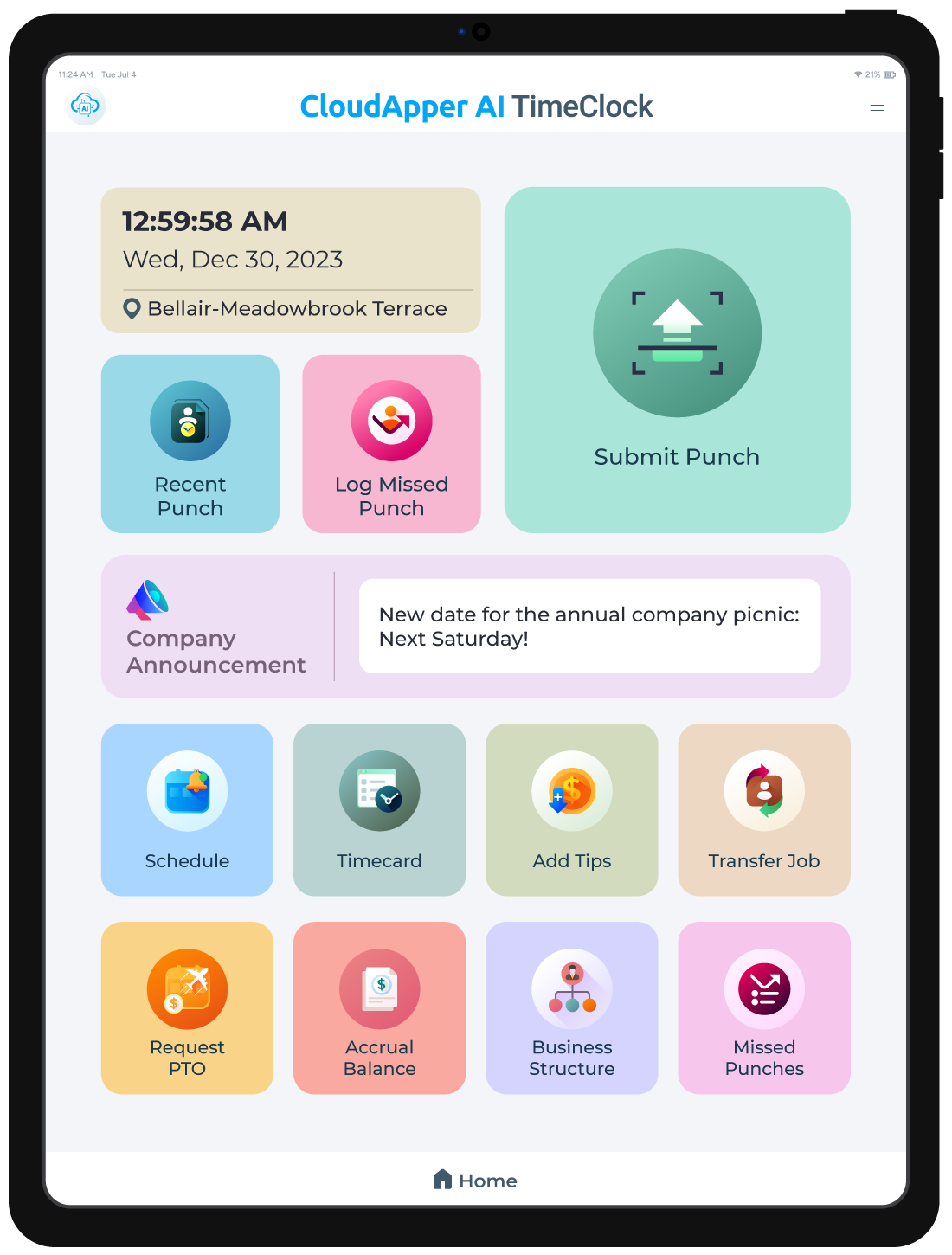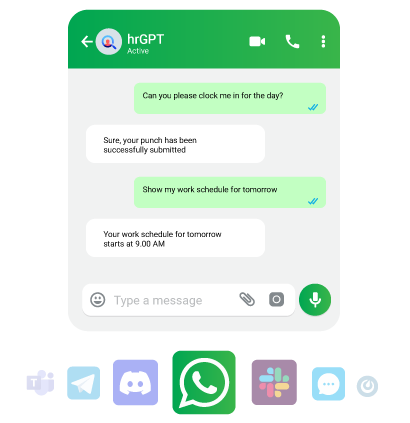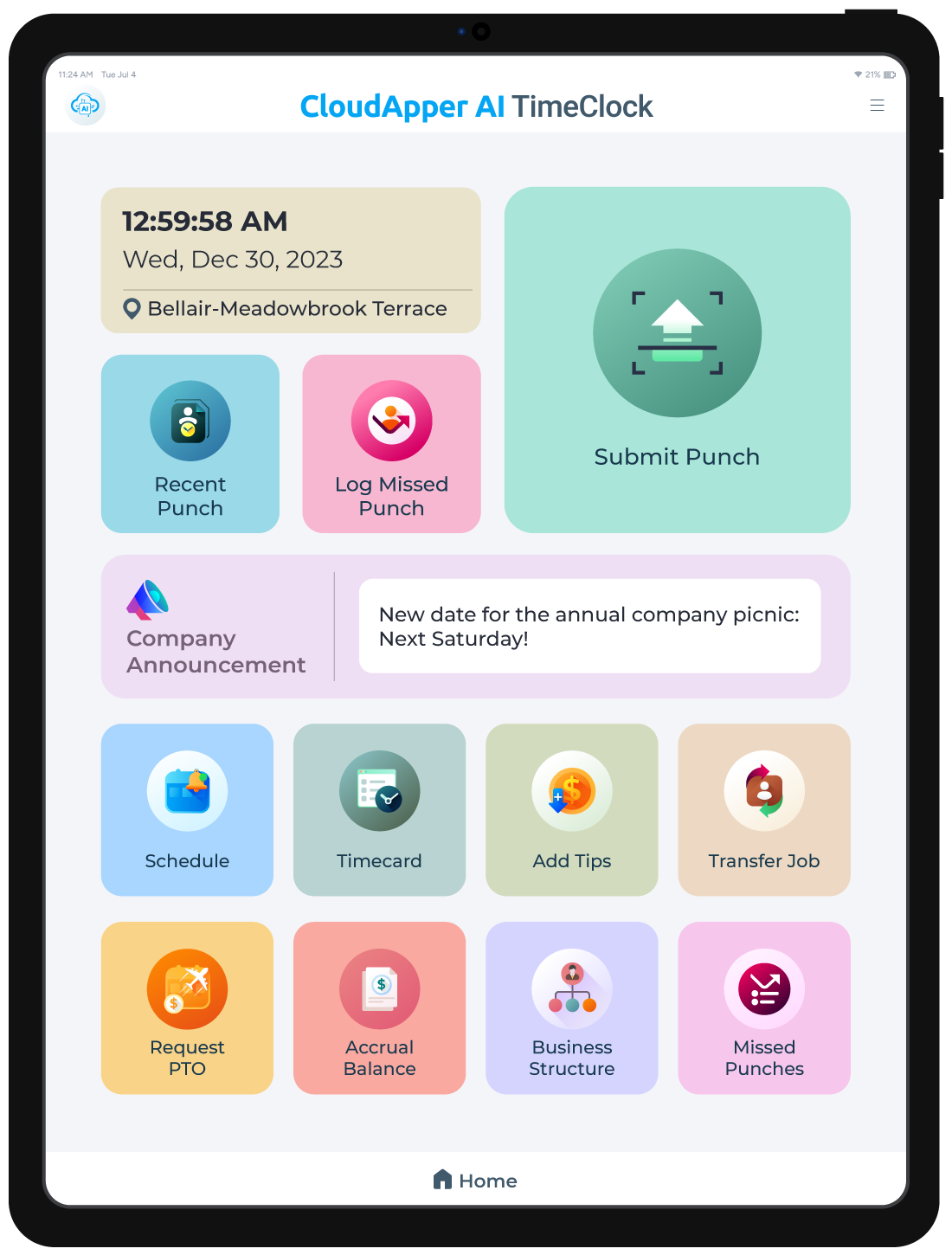Improving Workforce Accountability and Productivity with a Biometric Time Clock

If you have identified employee accountability as an issue for your business, you may have already taken measures to find the source behind the problem. Most likely, you have looked into the effectiveness of your leadership, the clarity of your strategic direction, employee engagement, and the execution philosophy of the firm. You may have also studied your employee monitoring and review system. Chances are if you took this step then you probably studied what technology you are using to help keep the gears of the business machine operating. If you suddenly discovered that you are not using modern technology to safeguard your inventory and profits and more effectively track employee time and attendance with a biometric time clock, you may have uncovered a crack in the shell of your staff accountability platform.
Using a biometric time clock for employee accountability
A biometric time clock allows your business to effectively address the issue of employee accountability. More and more businesses are considering implementing a biometric time clock with their workforce management system, and for good reasons. Say, for example, you use a POS software for your business. Biometric technology can ensure a clear audit trail for POS transactions and removes the problems of swapping IDs, passwords or PINs. Biometric time clocks accurately provide irrefutable data on who is performing tasks, thereby encouraging employees to act ethically which helps to increase accountability.
Biometric time clocks improve employee productivity
 A biometric time clock addresses another important issue for your business; employee productivity. Besides eliminating the practice of keeping manual time and attendance records, a biometric time clock system saves employee time, decreases staffing overhead, and provides accurate labor data to the payroll system to effectively manage business operations and increase productivity.
A biometric time clock addresses another important issue for your business; employee productivity. Besides eliminating the practice of keeping manual time and attendance records, a biometric time clock system saves employee time, decreases staffing overhead, and provides accurate labor data to the payroll system to effectively manage business operations and increase productivity.
According to a case study, through a combination of increased productivity and reducing buddy punching, a company estimated $15,000 in savings per year through a $5,000 investment in biometric technology.
Biometric time and attendance solutions have a positive impact on improving employee productivity. A biometric time clock impacts employee productivity by providing:
· Higher Efficiency
Your business runs payroll at the end of a pay period. If you are using a manual process to collect and calculate time cards, the time necessary to process payroll for the entire organization can be tedious and laborious. It is common practice for organizations with a manual timekeeping and payroll process to spend five hours or more running payroll at the end of each pay period.
Even if it’s the responsibility of one person, five hours per pay period adds up to a lot of productivity hours with a direct expense (hourly pay). The point is, the amount of time it takes to utilize time and attendance data through manually run payroll can be severely reduced to a matter of minutes with a biometric time clock. Productivity hours and the related personnel wages saved can be reallocated elsewhere once you eliminate some manual processes.
Automating the collection of time through data collection devices ensures payroll records are in an electronic format. This allows data transfer to be automatically sent to your payroll solution for processing.
· Increased accuracy
A biometric time clock reduces or can eliminate the need for any manual reentry of timekeeping data into a payroll system when the two are integrated. The result is accurate payroll processing that can take as little as 20 minutes per pay period.
Reducing the time it takes to run payroll while increasing data accuracy through collection by biometrics can lead to increases in both employee productivity and cost savings.
· Eliminates buddy punching & time theft
Buddy punching is an illegal practice where one employee either types a tardy employee’s personal identification number (PIN) or swipes the employee’s badge earlier than they are scheduled to arrive for work or after they leave work. The organizational costs of this kind of time theft can be enormous. According the American Payroll Association, buddy punchers cost U.S. Companies nearly $400 billion a year in losses.
Biometrics makes it almost impossible for employees to defraud a time and attendance system. Due to the fact that biometric traits are unique, no one else except you can punch in or punch out which results in timely attendance and payroll savings for an organization.
Conclusion
Workforce management experts believe that the use of a biometric time clock is likely to significantly increase in the near future due to its unique ability to eliminate buddy punching and time. A biometric time clock improves the ease-of-use, efficiency, and accuracy of timekeeping systems while saving payroll costs and increasing workforce accountability and productivity.












Biometric time clock can improve employee accountability and productivity for a business by providing accurate, irrefutable data on who is performing tasks and when, eliminating buddy punching and time theft, and increasing efficiency and accuracy of payroll processing. This can lead to cost savings for the business and allow for the reallocation of resources to other areas. Additionally, integrating a biometric time clock with a POS system can provide a clear transaction audit trail and improve security. Overall, implementing a biometric time clock can be a cost-effective solution to improve the efficiency and accountability of the workforce management system.